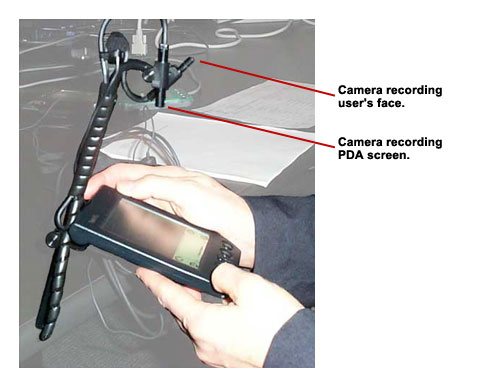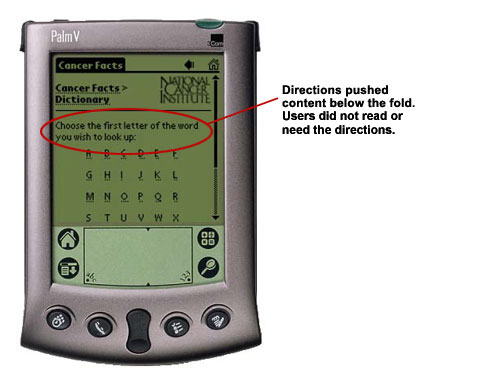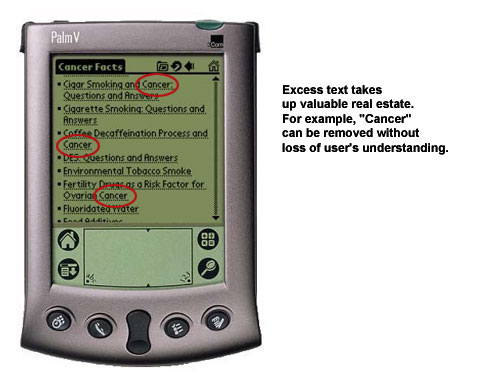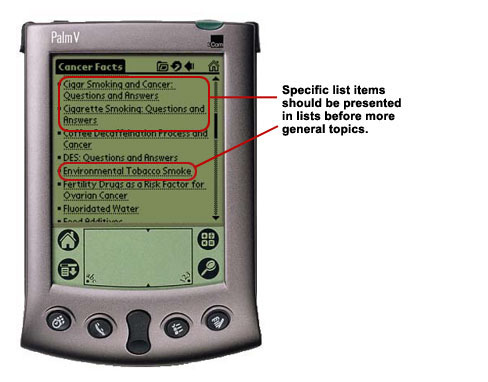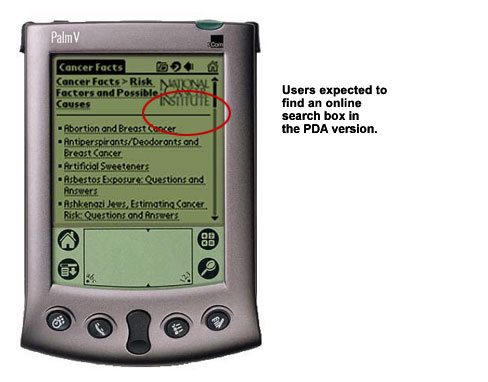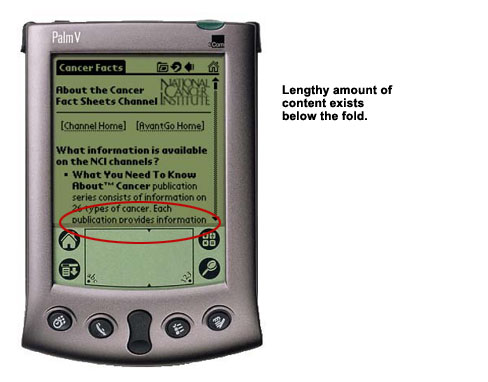 |
 |
|
|
Delivering Cancer Information to PDAs and Other Wireless Devices
Providing cancer information on handheld wireless devices such as Palm and Pocket PCs presents new challenges to designers and usability professionals. This case study evaluates the process from recruitment to testing to screen designs. CIS - Cancer
Information Services Purpose of Study: This study also provided the opportunity to determine if cancer information could be designed for the public on PDAs. The AvantGo Enterprise 4.2 Solution provides a platform to deliver Internet content onto handhelds. A special detailed development lesson on using AvantGo is available. Recruitment agencies
are not likely to have the same success in recruiting PDA users as they
did recruiting Web users. Detailed
screening questionnaires are needed to find skilled PDA users. For example, in several instances PDA users indicated they used their handheld on a daily basis for numerous purposes but were unaware of the search capability until this feature was pointed out to them during testing. PDAs and computers require different scenarios. Method: Lessons Learned: For example, users requested that the topics be arranged by cancer type in order to access the content more quickly. Hardware and
software on PDAs vary significantly. For example, there are four different pathways to input data onto the PDA:
This may have a significant effect on usability testing for performance. Users are
aware of the limited memory capability in their PDAs.
PDA testing takes a greater amount of time than computer testing. Identical scenario comparison
There may be two reasons for the time differences. 1. The user’s
ability to adjust to working with a handheld Examples of factors that affected performance included the user’s understanding of how the testing equipment works and the facilitator’s instructions on how to use the software. Recording
the user’s interaction required special tools. The testing setup included two small cameras: one trained on the user’s face and the second on the handheld screen.
Lighting must be tested and adjusted in advance of testing. Lighting required for the video recording caused glare problems for the user. Commercially available screen protectors helped reduce the glare but also reduced the contrast ratio (leading to lower levels of screen readability) as well as a change in the user’s writing speed.
The smaller size and resolution of the PDA screen presented usability challenges, such as size of graphics and link size. Instructions and other similar text should be used sparingly and only when necessary.
Instructions cause content to be pushed below the fold, which can then be missed by users. Links should be brief and contain only necessary key words.
As with Web pages, specific options should be presented before general options.
PDA users
expect to find Web-like interfaces on their handhelds.
For further search lessons learned, please see the special detailed development lesson on using AvantGo. Due to low screen resolution and small screen size, long narrative descriptions were not effective. For example, PDA users seldom used the Frequently Asked Questions section because it was so long.
|
|
|
||||||||||||||||||||||||||||||||
